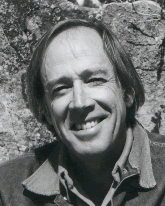First Discussion starter:
Evaluate the difference between pot-hunters actions, Tepary Jones taking the flute from Picture House in Kokopelli's Flute, and discovering and keeping arrowheads or pottery shards found in forests and or canyons in your backyard or near your home.
Wednesday, April 14, 2010
Critical Thinking - Making Deeper Connections
Taking it Deeper:
Think about the questions below and respond to them in a thoughtful and organized paragraph in the discussion board.
1. What would the Ancient Native Americans/Anasazi think of any or all of these actions and why do you believe this?
2. If you have taken a pottery chard from the wilderness, or an arrowhead from your backyard would you have a different action next time based on your experience with Kokopelli's Flute and Native American Studies?
3. Can you make a connection between the Native Americans perspectives of ancient archaeological sites and Naturalists/Environmentalists perspectives of "Leave No Trace."
4. Do you agree with the ranger?
Think about the questions below and respond to them in a thoughtful and organized paragraph in the discussion board.
1. What would the Ancient Native Americans/Anasazi think of any or all of these actions and why do you believe this?
2. If you have taken a pottery chard from the wilderness, or an arrowhead from your backyard would you have a different action next time based on your experience with Kokopelli's Flute and Native American Studies?
3. Can you make a connection between the Native Americans perspectives of ancient archaeological sites and Naturalists/Environmentalists perspectives of "Leave No Trace."
4. Do you agree with the ranger?
Siprit Share!
Conclusion:
Create one statement that sums up your belief of how to treat objects left behind by ancient people. (spirit share the conclusion)
Create one statement that sums up your belief of how to treat objects left behind by ancient people. (spirit share the conclusion)
Subscribe to:
Comments (Atom)











